I am not a get-up-close galanthophile (the word is derived from the botanical name for snowdrops, Galanthus, and is used to describe those who are much more dedicated than I to seeking out special snowdrops); but I do love snowdrops. All they need to do to please me, is to be there in bulk, lifting my spirits in winter, making me think of spring and getting into the garden again. And they have done just that, up and down the country at the various ‘snowdrop venues’, including the Snowdrops at Hodsock Priory Festival. And even in my own enclosed town garden they have been appearing since December in small clumps, giving me great delight.
In early February I drove to Hodsock Priory, Blyth, Nottinghamshire (www.snowdrops.co.uk) for the celebration of the opening of the annual five-week Snowdrops at Hodsock Festival. The Buchanan family, now in its 9th generation (George and Kat Buchanan) at Hodsock, started their celebration of 250 years of their family history at Hodsock Priory marking the signing over to the first of the Buchanans in 1765.

For me this visit was a wonderful return to Hodsock Priory. My previous visit was in 2002 when I was asked to write an article for Country Life magazine on snowdrops and Hodsock’s then fairly new other winter plant attractions.
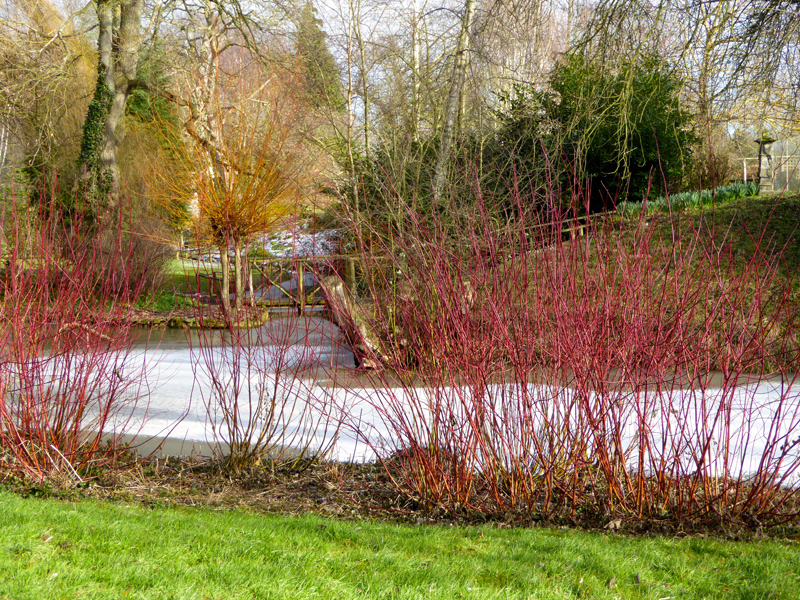
So in 2015, on a crisp, bright February morning it was delightful to see that those winter highlights had stood the test of time, still offering bark and stem colour, evergreen backgrounds and perfume to excite my winter-deprived eyes and dormant nose.
The early, informal snowdrop events hosted by George’s parents (Sir Andrew and Lady Buchanan) attracted around 2,000 visitors. Today, the 4 million snowdrops, massing in the woodland, are magnets for some 12,000 visitors.
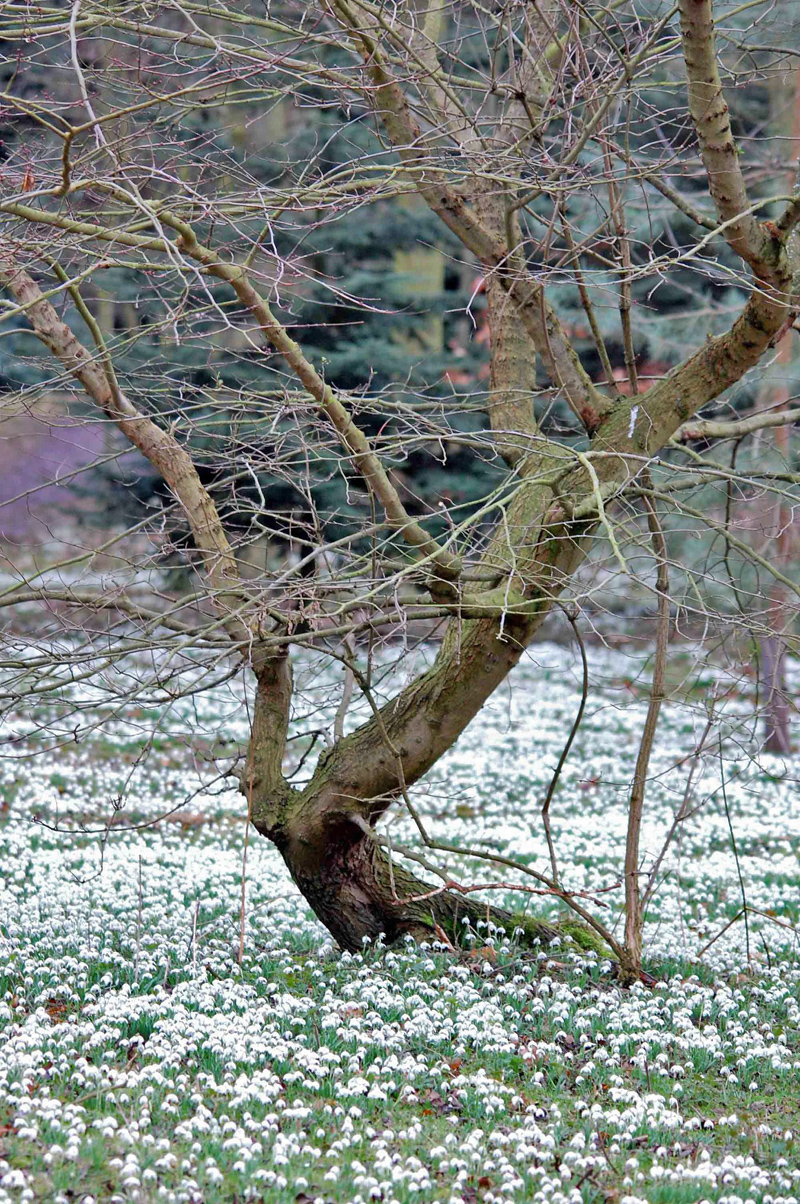
There are separate plantings of the very special snowdrops that have connections to Hodsock, such as ‘Lady Beatrix Stanley’ and ‘Barbara’s Double’ named after family members (George’s great grandmother and grandmother, respectively).
Honey-scent from the large-flowers of Galanthus ‘S. Arnott’ and almond-scent from G.allenii compete with a hedge of winter-fragrant Lonicera x purpusii, that are part of the colourful and fragrant winter plantings around the lake in the main garden.
Here trees, shrubs, perennials and bulbs in deep borders, alongside paths that curve near the lake, display their wintry splendour. The bark and stems of acers, birch and rubus; the foliage of holly, conifers, yew and cornus; and the flowers of parrotia, witchhazel, cotoneaster, viburnum and berries of ruscus, to single out just a handful of these choice winter performers, are still as dazzling as they were on my visit in 2002.
The white trunks and goblet-shaped branches of the birch grove (Betula jaquemontii) dominate the views across the lake towards the house. The goblet shapes are down to Lady Belinda (George’s mother), who realised that if they were pruned this way, they would provide a more effective winter focus.
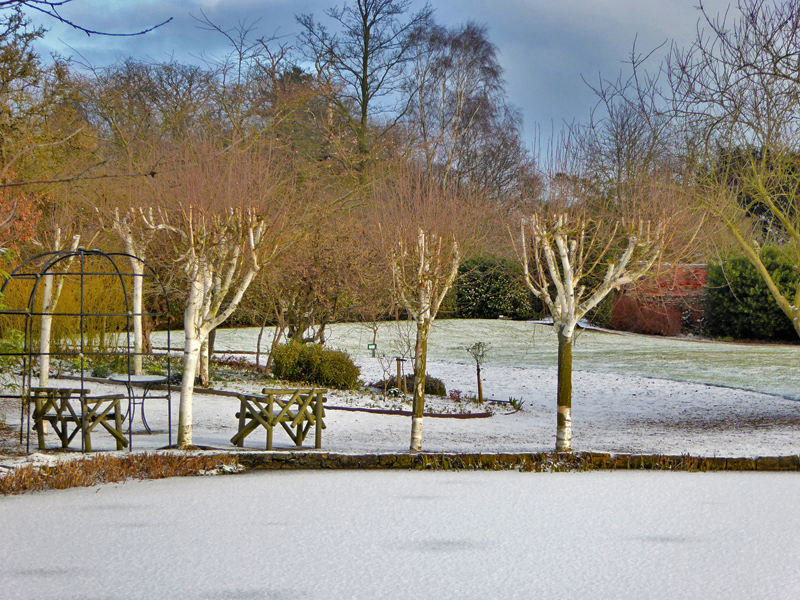
All through the garden fragrance, mainly from the flowers of winter honeysuckle (Lonicera x purpusii), Christmas box (Sarcococca var. humilis), and a large wintersweet (Chimonanthus praecox ‘Luteus’, yet again, literally led me by the nose around the garden.

There are plenty of seats from which to enjoy the garden scene, if you are well-wrapped up. In the woodland there is a fire pit that hardly goes out during the snowdrop season. Gather there with other visitors to enjoy a mug of soup and listen to talks about the snowdrops.
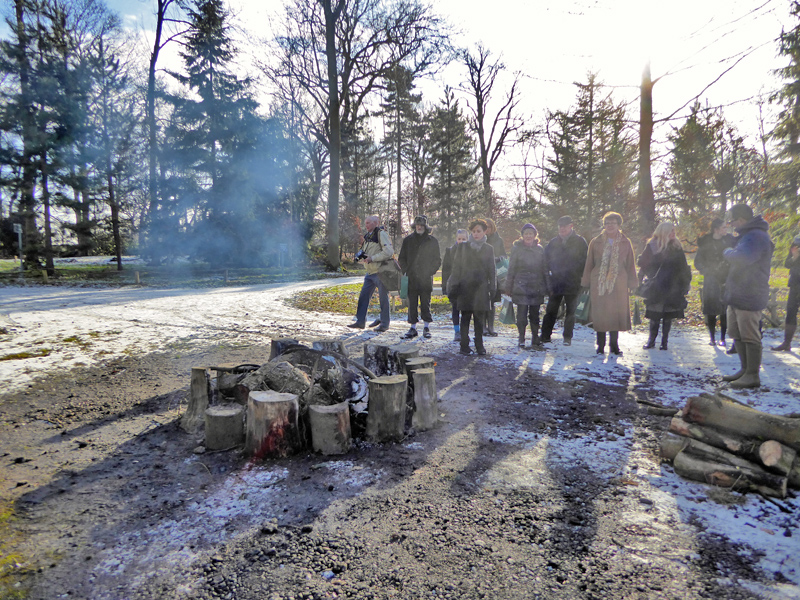
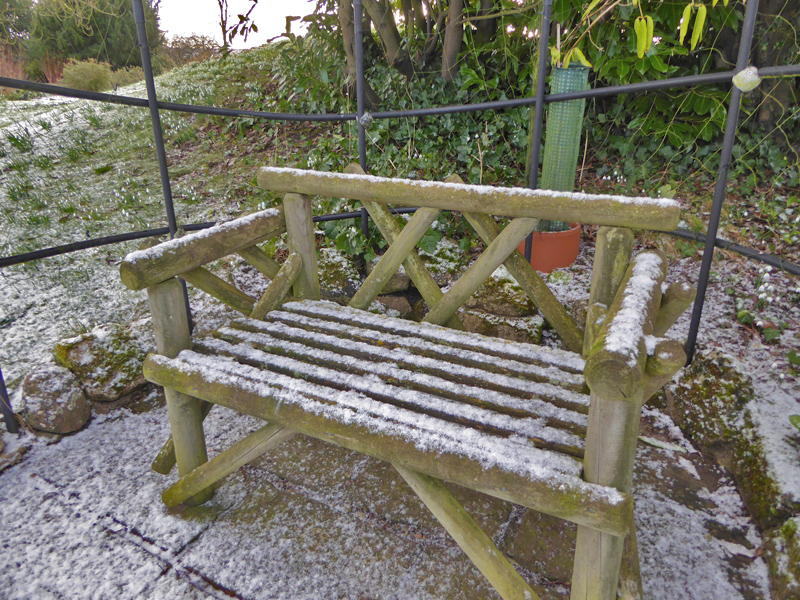
Hellebores also feature strongly in the winter garden, with some 500 Helleborus orientalis planted into the borders. In a border near the edge of the lake the pale green flowers of Petasites japonicus are a welcome addition to the garden in February, followed later by large umbrella-like foliage.
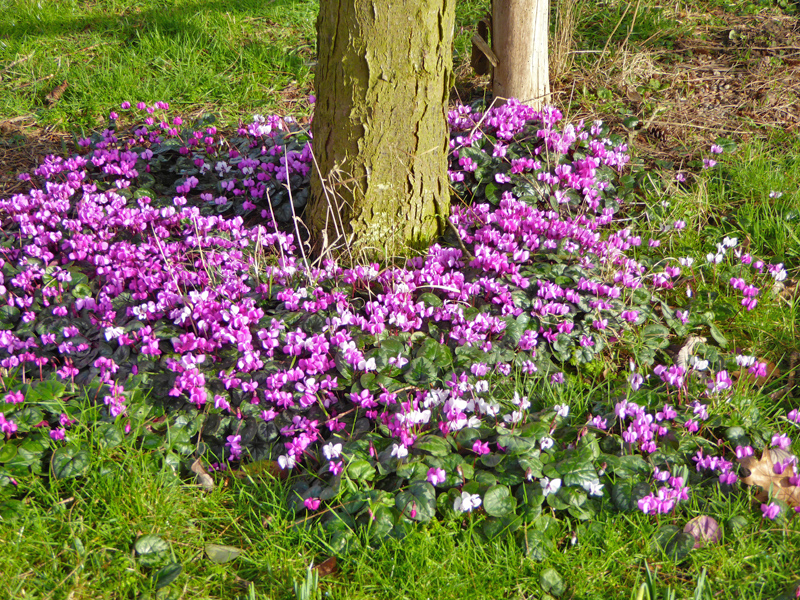
Bulb delights came in the shape of Cyclamen coum in profusion under trees, especially those located near Hodsock’s collection of historic bee-hives. Threads of yellow winter aconites and some patches of golden yellow of Narcissus ‘Cedric Morris’ lit the ground on the morning of my visit once the light dusting of overnight snow melted. When I visited in 2002, the long V-shaped beds, forming a ‘fan’ below the Italianate terrace, which dates from the early 1820s, were just being installed.
A fan garden, a popular feature a century ago, would have held shrubs, herbaceous and bedding plants. Hodsock’s modern version consists of snowdrops followed by Narcissus ‘Tête à Tête’. The bulbs are growing in beds of fine grass, sown from seed, which, when mown, will be cut to a different level to the rest of the lawn, so the fan shapes will be visible, even when the bulbs have died back.
The winter garden is in good shape and the snowdrops en masse in the woodland are a joy to see and you will catch them at their peak if you hurry along soon.
Snowdrops at Hodsock closes on 1 March.


Leave a Reply